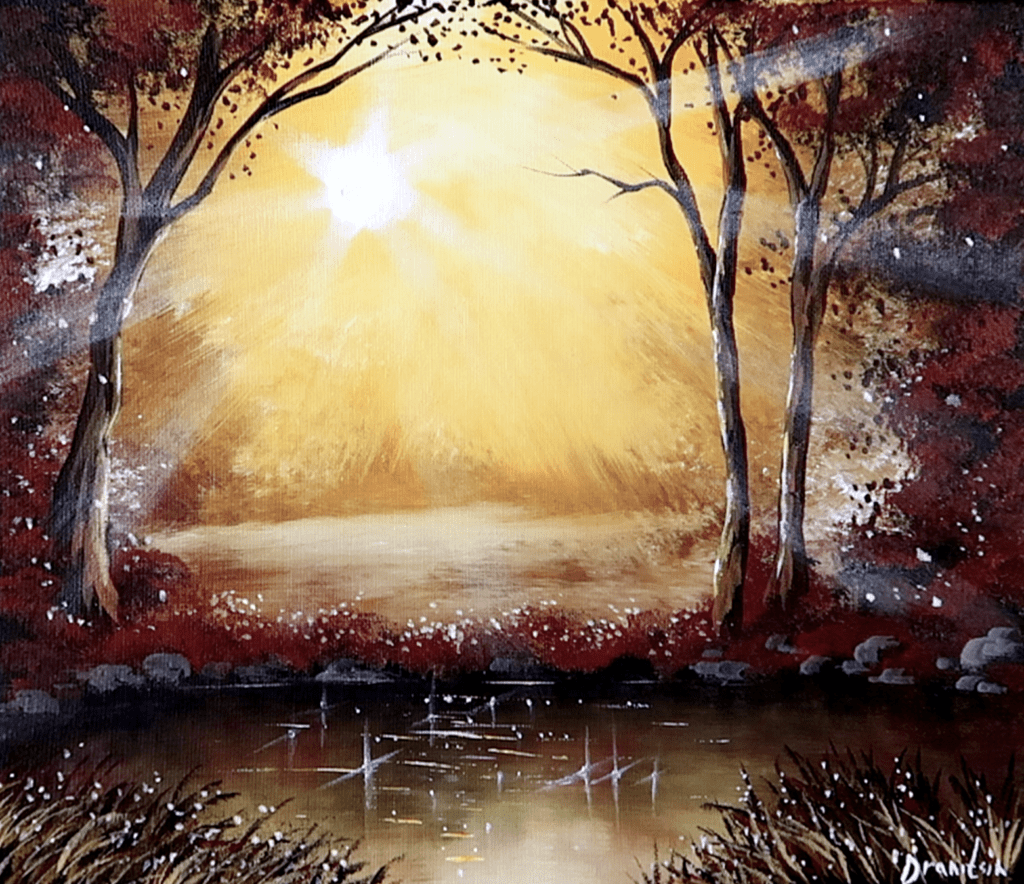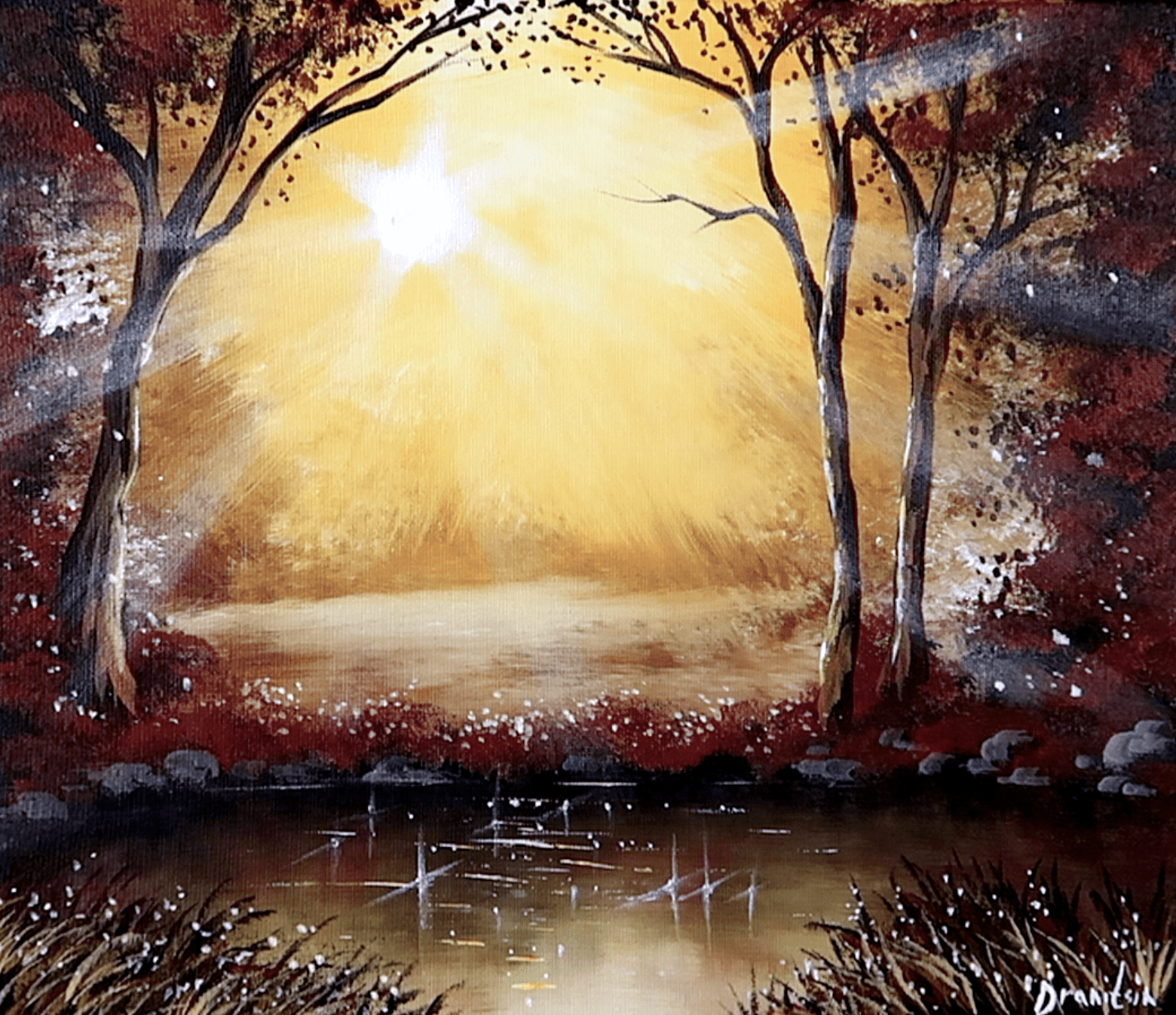
Creating a stunning acrylic landscape painting doesn’t have to be daunting, especially if you’re just starting out as an artist. With the right tips and techniques, you can dive into the world of acrylics and capture the beauty of the natural world on your canvas. In this article, we’ll guide you through the process, step by step, offering insights, inspiration, and practical advice. Whether you’re an aspiring artist or a hobbyist, let’s embark on this creative journey together.
Getting Started: Materials and Setup
1. Choosing Your Canvas
Selecting the right canvas is your first step. Opt for a pre-stretched canvas or canvas board in a size that suits your project.
2. Acrylic Paint Selection
Invest in quality acrylic paints. A basic set of primary colors, along with black and white, will give you a versatile palette.
3. Brushes and Tools
Acquire various brush sizes and shapes to experiment with different strokes. Palette knives and sponges can add interesting textures.
4. Easel and Workspace
A stable easel and a well-lit workspace are essential for comfortable painting sessions.
The Art of Mixing Colors
5. Color Theory Basics
Understanding color theory will help you mix and blend colors effectively. Learn about primary, secondary, and complementary colors.
6. Gradual Color Blending
Start with simple color gradients and practice blending them smoothly to create skies, water, and foliage.
7. Creating Depth
Utilize dark and light shades to add depth and dimension to your landscapes. Experiment with layers.
Brush Techniques for Beginners
8. Dry Brushing
Dry brushing can add texture and depth to your painting. It’s perfect for creating tree bark and rocky surfaces.
9. Wet-on-Wet Technique
This technique involves painting on a wet surface, allowing colors to blend naturally. Ideal for creating stunning sunsets.
Landscape Elements: Tips and Tricks
10. Painting Trees and Foliage
Explore techniques for painting realistic trees and lush foliage. Vary your brushstrokes for different tree species.
11. Water Reflections
Learn how to capture the tranquility of water by creating convincing reflections.
12. Adding Mountains and Hills
Use layering and shading to give your landscape depth with realistic mountains and hills.
Final Touches and Details
13. Adding Wildlife
Infuse life into your landscape by incorporating birds, animals, or even people into the scene.
14. Textures and Texture Mediums
Experiment with texture mediums like gel or impasto to add tactile qualities to your painting.
15. Signature and Varnishing
Sign your artwork and protect it by applying an acrylic varnish once your painting is thoroughly dry.
Acrylic landscape painting is an art form that allows beginners to explore their creativity and connect with nature. From the first stroke of your brush to the final signature, it’s a journey of self-expression. Embrace the process, don’t be afraid to make mistakes, and let your passion guide you. With practice and patience, you’ll watch your skills grow and your landscapes come to life.
As you embark on your acrylic painting adventure, remember that every artist has a unique style. Your landscape paintings will reflect your perspective and creativity, making each one a work of art that is entirely your own.
Feel the joy of blending colors and shaping landscapes. With every painting, you’ll gain new insights and refine your techniques. So, grab your brushes, find inspiration in the world around you, and start your acrylic landscape painting journey. You’re about to create something beautiful and unique!
Frequently Asked Questions
1. Can I use acrylics for landscape painting as a beginner?
Absolutely! Acrylics are a beginner-friendly medium with quick drying times and versatility, making them ideal for landscape painting.
2. How do I avoid overmixing my colors?
To prevent overmixing, use a palette with sections for individual colors. Be mindful of how much paint you pick up on your brush, and clean your brush between color changes.
3. Is it necessary to invest in expensive brushes and paints for beginners?
While quality materials can enhance your painting experience, it’s possible to start with budget-friendly options. As you progress, you can gradually invest in better supplies.
4. What are some simple landscape painting ideas for beginners?
Start with basic scenes, like a serene lakeside view or a countryside landscape. These offer opportunities to practice fundamental techniques.
5. How long does it take for acrylic landscapes to dry completely?
The drying time varies depending on the thickness of your paint layers, but it usually takes around 20-30 minutes to touch dry and a few hours to completely dry. Make sure to allow for proper drying between layers.


Leave a Reply
You must be logged in to post a comment.